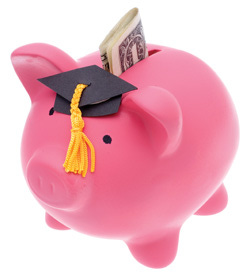Loans 101
January 29, 2015
By: Leanne DeMars

While Salem State students are trudging through snow drifts,, their minds are also focused on the spring semester. This includes, among other things, figuring out how they are going to pay for their education. Financial aid is a very complicated thing to understand, especially when it comes to loans. I recently got in touch with Walt Minnick from Salem State’s financial aid office to ask him a few questions about the different kinds of loans, available to students.
1. Who is eligible to take out federal student loans? Anyone eligible to file a FAFSA is eligible for Direct Stafford Loans, as long as they haven’t already borrowed maximum eligibility and/or defaulted on previous federal student loans. The student must be in a degree granting program, at least half-time, and in good academic standing. Other federal and state loan programs may be offered on a case by case basis, but, in most cases, only Direct Stafford Loans are offered, since the other programs are only budgeted to Salem State University in limited amounts.
2. Which kind of loan is most preferred? Of the two types of Direct Stafford Loans (Subsidized and Unsubsidized), Subsidized loans are the preferred type, since Unsubsidized loans charge interest during the entire life of the loan, while Subsidized loans won’t start charging the students interest until their Grace Period and Repayment.
3. Which kinds of loans have the most flexible repayment plans? Direct Stafford Loans offer the same repayment options, whether repaying a Subsidized or Unsubsidized loan. Both loans are Deferred while students are enrolled at least half-time (6 credits), offer one 6-month Grace Period after coming out of Deferment, and begin Repayment once the Grace Period ends. Borrowers are set up in Repayment on a Standard term of 120 equal monthly payments over the course of 10 years.
4. Which kinds of loans have the least amount of interest? Both types of Direct Stafford Loans, Subsidized and Unsubsidized, actually charge the same interest rate; however, the Subsidized loan will likely charge less interest during the life of the loan, since it does not charge the student interest until the goes into repayment.
5. Do you have any professional advice that you would offer incoming students about loans? I would suggest borrowing minimally – if one can afford to pay any portion out of pocket, one should. Federal student loans are a great resource, if needed – they generally offer lower interest rates and better repayment policies and protections for student borrowers, but they are still loans that still charge interest. Though borrowing loans to cover living expenses is allowed, it’s not recommended. If it’s affordable to make payments on loans before entering repayment, doing so will also save the borrower money in the long run.
Contributor's Note: Leanne studies Business here at SSU.


